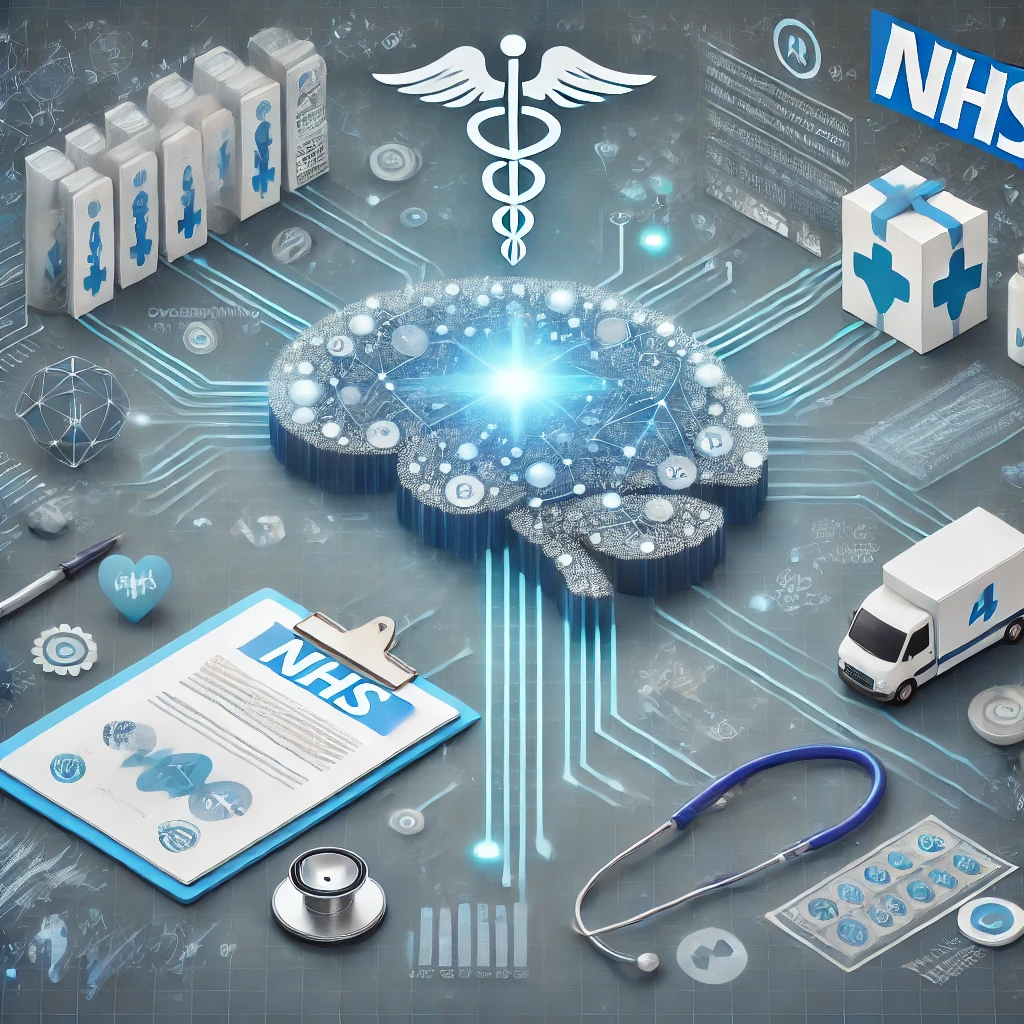The Challenges of Decentralized IT Platforms in the NHS and the Role of AI in Transforming Healthcare

The National Health Service (NHS) has been a fundamental pillar of healthcare in the UK, offering cost-free medical services to millions of residents based on their immediate requirements. Nevertheless, the NHS encounters a multitude of obstacles, a significant number of which are worsened by its dependence on a decentralised information technology (IT) framework. The absence of a completely centralised IT infrastructure inside the NHS not only impedes productivity but also jeopardises the lives of patients. This article will analyse the challenges, assess the potential of AI in improving healthcare planning and maintenance, and highlight successful implementations of AI in countries such as Sweden to enhance the overall social healthcare system.
The Challenges of a Decentralized IT System in the NHS

The NHS’s IT infrastructure is a patchwork of different systems that have evolved over time. This decentralization creates several significant issues:
- Data Fragmentation: Data fragmentation is a highly significant issue in decentralised IT systems. Healthcare workers sometimes encounter challenges in accessing comprehensive and current information due to the fragmented distribution of patient records, medical histories, and treatment plans across many databases and systems. Fragmentation of healthcare services can result in treatment delays, incorrect diagnoses, and potentially fatal mistakes.
- Interoperability Issues: Interoperability concerns can arise when several IT systems have difficulties in properly communicating with one another. Consequently, the process of transmitting patient data across departments or healthcare providers can be arduous, time-consuming, and susceptible to mistakes. Delays of this nature pose a significant risk, especially in urgent situations where time is crucial.
- Inefficient Resource Allocation: Efficient resource allocation becomes problematic in the absence of a centralised IT platform. For instance, monitoring the accessibility of hospital beds, medical equipment, or specialists becomes increasingly intricate, resulting in less-than-optimal utilisation of resources and extended waiting periods for patients.
- Security Vulnerabilities: Securing decentralised systems is a more complex task. The presence of various entry points and variable degrees of protection across different platforms amplifies the vulnerability to cyberattacks. A breach in a single system has the potential to jeopardise confidential patient information throughout the entire network.
The Risk to Patient Safety
The ramifications of these IT difficulties are extensive and can directly affect the safety of patients. For instance, a disintegrated system could lead to healthcare practitioners lacking access to a patient’s comprehensive medical records, so resulting in erroneous treatment choices. In severe instances, this could signify the distinction between survival and mortality.
Furthermore, the inefficiencies resulting from decentralised systems can cause treatment delays, hence raising the probability of problems. The absence of immediate data exchange might also impede healthcare professionals’ capacity to efficiently respond to public health crises, such as pandemics.
The Potential of AI in Healthcare
Artificial Intelligence (AI) presents a hopeful resolution to the obstacles presented by decentralised IT systems in the healthcare sector. By incorporating artificial intelligence (AI) into the operations of the National Health Service (NHS), the healthcare system may enhance its efficiency, prioritise the needs of patients, and ensure safety. The following steps outline the process:
- Centralized Data Management: Artificial intelligence (AI) can facilitate the development of a centralised platform that consolidates data from multiple sources into a unified and easily accessible repository. Implementing this measure would guarantee that healthcare providers possess comprehensive and current patient data, thereby diminishing the likelihood of mistakes and enhancing the standard of care.
- Predictive Analytics for Resource Allocation: Artificial intelligence has the capability to examine extensive quantities of data in order to forecast patterns in the demand for healthcare. This enables a more effective distribution of resources. For example, predictive models have the capability to anticipate the requirement for hospital beds, facilitating improved strategic planning and mitigating congestion in patient care.
- Improved Diagnosis and Treatment: AI-driven diagnostic systems can analyse patient data to detect patterns and generate more precise diagnoses. Machine learning algorithms can aid in customising treatment programs, guaranteeing that patients receive the most efficient medicines according to their unique profiles.
- Enhanced Security: AI has the capability to bolster the security of healthcare systems by promptly detecting and pinpointing potential threats and vulnerabilities. AI-powered cybersecurity technologies have the capability to observe network activity, identify irregularities, and react to security breaches more swiftly compared to conventional approaches.
AI Sweden: A Case Study in AI-Driven Healthcare

In order to comprehend the potential advantages of AI in the healthcare sector, we can examine the case of Sweden, where AI has already had a substantial influence. AI Sweden, a prominent institution for applied AI research and innovation, has been leading the way in incorporating AI into the healthcare sector.
AI Sweden’s primary endeavour entails leveraging artificial intelligence to establish a comprehensive healthcare approach, wherein patient data is consolidated and readily available to all pertinent healthcare practitioners. This method not only optimises patient care but also enables more precise and prompt treatments.
AI Sweden has created algorithms that can forecast patient deterioration in real-time, enabling healthcare providers to intervene prior to a patient’s condition reaching a critical state. In addition, AI is being utilised to enhance the allocation of resources, specifically by ensuring that healthcare experts and equipment are efficiently deployed to areas with the highest demand.
The triumph of AI Sweden exemplifies the profound capacity of artificial intelligence in revolutionising the healthcare industry. By implementing comparable tactics, the NHS may effectively address the obstacles presented by its decentralised IT infrastructure and enhance patient results.
Conclusion
The National Health Service’s dependence on a decentralised information technology infrastructure poses a substantial obstacle to delivering efficient and secure treatment. Data fragmentation, interoperability challenges, and security vulnerabilities collectively lead to a hospital setting that jeopardises patient safety. Nevertheless, via adopting AI, the NHS may shift towards a more consolidated, effective, and patient-focused approach to healthcare.
AI has the capacity to completely transform the delivery of healthcare by increasing diagnoses and treatment, optimising resource allocation, and improving security. The triumph of AI Sweden exemplifies how artificial intelligence may establish a comprehensive and efficient healthcare system. Integrating AI into the operations of the NHS could be crucial for solving existing obstacles and ensuring optimal patient outcomes as the organisation looks ahead.
References
- Transforming healthcare through AI: AI Sweden’s initiatives.
- Digital Transformation in the NHS.
- Harnessing AI for Health
By addressing these challenges head-on and leveraging the power of AI, the NHS can build a healthcare system that is not only more efficient but also safer and more responsive to the needs of its patients.
